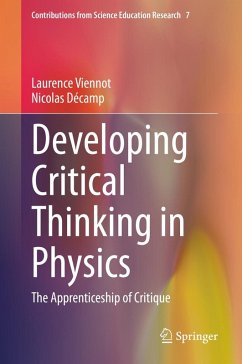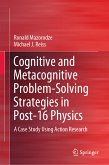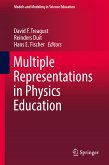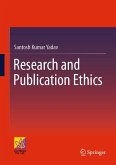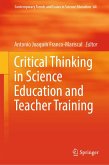This book promotes the effective implementation and development of critical analysis in physics. It focuses on explanatory texts concerning subjects typically dealt with in secondary or higher education and addressed in an academic or popular context. It highlights the general difficulties and obstacles inherent in teaching physics and shows how some tools can help to combine successful criticism and better understanding. The book examines the main reasons to call a text into question and looks at risk factors such as simplifications, story-like explanations and visual analogies. It takes inventory of the benefits and limits of critical analysis and discusses the complex links between conceptual mastery and critical attitude. The book ends by offering tools to activate critical thinking and ways for educators to guide students towards productive critical analysis.
Dieser Download kann aus rechtlichen Gründen nur mit Rechnungsadresse in A, B, BG, CY, CZ, D, DK, EW, E, FIN, F, GR, HR, H, IRL, I, LT, L, LR, M, NL, PL, P, R, S, SLO, SK ausgeliefert werden.
Es gelten unsere Allgemeinen Geschäftsbedingungen: www.buecher.de/agb
Impressum
www.buecher.de ist ein Internetauftritt der buecher.de internetstores GmbH
Geschäftsführung: Monica Sawhney | Roland Kölbl | Günter Hilger
Sitz der Gesellschaft: Batheyer Straße 115 - 117, 58099 Hagen
Postanschrift: Bürgermeister-Wegele-Str. 12, 86167 Augsburg
Amtsgericht Hagen HRB 13257
Steuernummer: 321/5800/1497
USt-IdNr: DE450055826
Bitte wählen Sie Ihr Anliegen aus.
Rechnungen
Retourenschein anfordern
Bestellstatus
Storno

